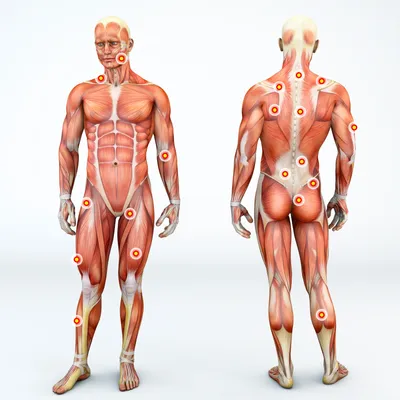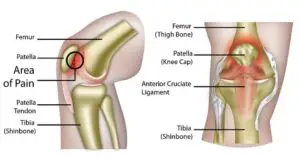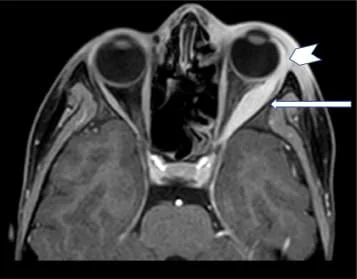Vitamin C Deficiency
What is Vitamin C Deficiency?
Vitamin C deficiency arises when the body lacks sufficient amounts of this essential nutrient in the diet. Insufficient vitamin C hinders the formation of new collagen, leading to the breakdown of various body tissues and impairing overall health and repair processes. Prolonged deficiency, typically lasting three months or more, can result in the development of scurvy.
What is Vitamin C?
Vitamin C, also known as ascorbic acid, belongs to a group of essential nutrients that are vital in small quantities for maintaining overall health. Unlike some vitamins, the human body cannot produce vitamin C, making it crucial to incorporate it into one’s diet. This vitamin plays a key role in the synthesis of collagen, a vital component for the health and repair of various tissues, including skin, bones, cartilage, ligaments, tendons, blood vessel walls, and teeth.
A persistent deficiency in vitamin C can lead to scurvy, characterized by symptoms such as easy bruising, bleeding, and muscle and joint pain. The condition can be effectively treated by consuming a diet rich in vitamin C and taking vitamin C supplements.
Numerous foods serve as excellent sources of vitamin C, including citrus fruits (oranges, grapefruit, limes, and lemons), berries (blackcurrants, strawberries, raspberries, blueberries, and cranberries), cantaloupe melon, watermelon, kiwi fruit, and vegetables, for example, spinach, green and red peppers, tomatoes, cauliflower, cabbage, broccoli, Brussels sprouts, & potatoes.
Some cereals are fortified with vitamin C, indicating the addition of this essential nutrient. Additionally, vitamin C is present in fresh milk, fish, and organs like the liver and kidney. It’s worth noting that boiling vegetables and fruits can reduce their vitamin C content by about a third.
The recommended daily intake of vitamin C varies based on age and sex, with pregnant and breastfeeding women requiring higher amounts. Here’s a general guide:
- Children aged 1 to 10 years: 30 mg of vitamin C per day.
- Children aged 11 to 14 years: 35 mg of vitamin C per day.
- Children over the age of 15 years and adults: 40 mg per day.
It’s essential to note that dietary advice may differ among countries, and consulting with healthcare professionals can provide personalized guidance.
How common is Vitamin C Deficiency?
The occurrence of scurvy resulting from vitamin C deficiency is rare in the UK. However, specific groups are more susceptible to such deficiencies, including:
- Individuals reliant on medications or alcohol, often with imbalanced diets
- Those adhering to extremely restrictive diets
- People with limited income who may not prioritize purchasing foods rich in vitamin C
- Individuals with medical conditions affecting food digestion and absorption, such as Crohn’s disease and ulcerative colitis.
- Older adults may have a less diverse diet.
- Smokers, as smoking affects vitamin C absorption and accelerates its depletion in the body.
- Pregnant and breastfeeding women have elevated requirements for vitamin C.
Causes of Vitamin C Deficiency
The primary cause of vitamin C deficiency is an imbalanced diet, as the human body doesn’t naturally synthesize vitamin C and relies on external sources, particularly food intake, including vegetables, fruits, and fortified foods. Various factors contribute to an improper diet leading to vitamin C deficiency:
- Lack of vitamin C-rich fresh vegetables and fruits in the diet
- Mental health problems and conditions like anorexia
- Ageing
- Restrictive diets due to health disorders such as a weak digestive system or allergies
Additionally, other causes of vitamin C deficiency include treatments, health conditions, and habits that limit nutrient absorption.
- Ulcerative colitis
- Excessive alcohol and drug consumption
- Chemotherapy
- Crohn’s disease
- Smoking
- Hyperthyroidism
- Pregnancy
- Prolonged diarrhoea
- Surgery
Unlike most animals, humans lack the enzyme L-gluconolactone oxidase, making vitamin C essential. Vitamin C is naturally present in fresh fruits and vegetables such as grapefruits, oranges, lemons, limes, potatoes, spinach, broccoli, red peppers, and tomatoes. Up to 90% of vitamin C is obtained from vegetables and fruits. Lack of exposure to these foods is a common cause of deficiency.
Vitamin C is heat-sensitive, and cooking vegetables can reduce their nutritional value. While a small amount of vitamin C is found in leukocytes, adrenal glands, or the pituitary, there is minimal storage in the body. Plasma concentration is closely linked to current intake, with symptoms like weakness appearing when body storage drops below 350 mg after reaching a maximum of 1500 mg.
Risk factors for vitamin C deficiency include:
- Alcoholism
- Babies are exclusively fed cow’s milk.
- Seniors following a tea and toast diet
- Socioeconomically disadvantaged individuals unable to afford fruits and vegetables
- Smokers
- People with eating disorders
- Type 1 diabetes patients with high vitamin C needs
- Individuals with GI tract disorders like inflammatory bowel disease
- People with iron overload, leading to vitamin C wasting by the kidneys
- Those with restrictive diets and food allergies
How Much Vitamin C Do You Need to Prevent Deficiency?
Maintaining adequate vitamin levels is relatively straightforward with a well-balanced diet. Adult women, whether pregnant, breastfeeding, or not, require 75 milligrams of vitamin C daily, while men need 90 milligrams. Achieving this is as simple as incorporating a variety of vitamin C-rich foods into your diet. For example, half a cup of fresh red bell pepper and three-fourths of a cup of orange juice can meet your daily needs. Adding half a cup of cooked broccoli brings you closer to fulfilling your requirement. It’s important to note that since the body doesn’t produce or store vitamin C, regular daily consumption is essential for overall health.
Signs and Symptoms of Vitamin C Deficiency:
Early signs of vitamin C deficiency may manifest in various health issues, including:
- Bleeding from the nose and gums
- Subperiosteal hemorrhage or bleeding between joints
- Loose teeth
- Improper and delayed wound healing
- Weak bones
Other severe and persistent symptoms due to vitamin C insufficiency include fever, nerve problems, shortness of breath, and convulsions. Identifying these signs might be challenging for individuals, as they could be attributed to a typical nutrient deficiency. However, a lack of vitamin C can lead to severe health conditions.
Individuals most susceptible to vitamin C deficiency are those with an overall poor diet, kidney disorders requiring dialysis, heavy drinkers, and smokers. Smokers, in particular, need an additional 35 milligrams of vitamin C daily to counteract the damage caused by free radicals produced during smoking.
- Slow Wound Healing: Vitamin C plays a crucial role in the recovery process when injured. The body relies on it to produce collagen, a protein essential for skin regeneration. Vitamin C facilitates the effective functioning of neutrophils, a type of white blood cell that fights off infections.
- Bleeding gums, nosebleeds, and bruises: Vitamin C contributes to maintaining healthy blood vessels and aids in blood clotting. Collagen, supported by vitamin C, is vital for healthy teeth and gums. Studies have shown that individuals with gum disorders who consumed grapefruit for two weeks experienced reduced gum bleeding.
- Weight Gain: Early research suggests a connection between low vitamin C levels and increased body fat, particularly around the abdomen. Vitamin C may play a role in enhancing the body’s ability to burn fat for energy.
- Dry, wrinkled skin: A diet rich in vitamin C is associated with smoother and softer skin. As an antioxidant, vitamin C helps protect the skin from free radicals that break down oils, proteins, and DNA.
- Fatigue and mood: Studies indicate that individuals with low levels of vitamin C report feeling fatigued and cranky. Supplementing vitamin C in-office employees led to decreased fatigue within two hours, especially in those with initially lower levels.
- Weak Immunity: Given its role in the immune system, vitamin C deficiency increases susceptibility to illnesses and delays healing. Evidence suggests that vitamin C can help prevent conditions like pneumonia and bladder infections and may even lower the risk of heart disease and certain cancers.
- Vision Loss: Age-related macular degeneration (AMD) may progress faster without sufficient vitamin C and other antioxidants. Adequate vitamin C from foods may contribute to preventing cataracts, but further research is needed to establish this relationship.
- Scurvy: While rare today, scurvy was a significant issue for sailors before the 1700s. It can occur with less than 10 mg/day of vitamin C. Symptoms include loose teeth, joint pain, and corkscrew body hair, with improvement seen within days of increased vitamin C intake.
- Rough, bumpy skin: Vitamin C deficiency can lead to keratosis pilaris, causing bumpy ‘chicken skin’ on the arms, thighs, or buttocks due to keratin buildup. Other aspects can contribute to this illness.
- Corkscrew-Shaped Body Hair: Vitamin C deficiency can affect hair growth, leading to bent or spiral shapes. This is a hallmark symptom but may not be definitive, as affected hairs are prone to breaking.
- Bright red hair follicles: Low vitamin C can make small blood vessels around hair follicles fragile, resulting in bright red spots. Vitamin C supplements can resolve this symptom within two weeks.
- Spoon-Shaped Fingernails with Red Spots or Lines: Spoon-shaped nails and red areas in the nail bed can be associated with both iron and vitamin C deficiencies. However, these observations alone are not diagnostic.
- Painful, Swollen Joints: Joints, rich in collagen, can be affected by vitamin C deficiency, causing joint pain and swelling. Vitamin C supplements can alleviate these symptoms within a week.
- Weak Bones: Vitamin C deficiency can impact bone health, increasing the risk of fractures and osteoporosis. Children may be significantly affected during their growth and development.
- Persistent Iron Deficiency Anaemia: Vitamin C and iron deficiencies often coexist, leading to symptoms like paleness, fatigue, and spoon-shaped fingernails. Vitamin C’s role in iron absorption is crucial.
- Chronic Inflammation and Oxidative Stress: As a water-soluble antioxidant, vitamin C helps prevent cellular damage, reducing oxidative stress and inflammation linked to chronic diseases. Low vitamin C intake is associated with higher inflammation levels and an increased risk of heart conditions.
It’s essential to maintain an adequate intake of vitamin C through a balanced diet to prevent these potential health issues.
Diagnosing Vitamin C Deficiency
The diagnosis of vitamin C deficiency is typically clinical, focusing on patients displaying skin and gingival signs indicative of potential deficiency. Laboratory verification may include a complete blood count, often revealing signs of anemia. Bleeding, coagulation, and prothrombin times typically remain normal. Specific laboratory diagnosis involves measuring blood ascorbic acid levels, with levels below 0.6 mg/dL [less than 34 mcmol/L] considered borderline and levels below 0.2 mg/dL [less than 11 mcmol/L] indicating vitamin C deficiency.
X-rays, particularly skeletal X-rays, are useful in childhood scurvy analysis, showcasing notable differences in long bones, especially around the knee. Early changes manifest as atrophy, resulting in a ground-glass formation due to trabeculae loss. Thinning of the cortex, a calcified white line known as Fraenkel’s line, and rarefaction or linear fractures near the white line may be observed. Additionally, compression of the epiphysis and the presence of healing subperiosteal bleedings may lead to petrified periosteum.
Measurement of ascorbic acid levels in the white blood cell and platelet layer of centrifuged blood is not commonly available. In adults, distinguishing scurvy from conditions like arthritis, hemorrhagic disorders, gingivitis, and protein-energy undernutrition is crucial. Pathognomonic signs include hyperkeratotic hair bristles surrounded by hyperemia and bleeding. Other nonspecific indicators include bleeding gums, conjunctival bleeding, petechiae, and ecchymoses.
Differential Diagnosis:
The differential diagnosis encompasses various cutaneous purpuric pathologies, including:
- Idiopathic thrombocytopenic purpura
- Henoch-Schonlein purpura
- Disseminated intravascular coagulation
- Rocky Mountain spotted fever
- Meningococcemia
- Hypersensitivity vasculitis
Mucosal involvement may mimic necrotizing gingivitis. Other vitamin deficiencies, such as niacin, biotin, and zinc, can present with skin changes. However, symmetric, hyperpigmented inflammation on sun-exposed sites, along with alopecia and the absence of petechial and follicular findings, easily differentiate these conditions from scurvy.
Treatment of Vitamin C Deficiency
Standard vitamin C replacement therapy involves daily doses of up to 300 mg for children and 500 mg to 1000 mg for adults. The goal is resolution within one month or upon the alleviation of clinical symptoms. Alternative regimens for adults may include a higher initial dose of one to two grams for up to 3 days, followed by 500 mg daily for a week, and then 100 mg every day for up to three months. Beyond direct supplementation, patient education on lifestyle adjustments for sufficient intake is essential, along with advising the discontinuation of alcohol and tobacco use.
In the absence of vitamin C, daily requirements are up to 45 mg for children, 90 mg for males, 75 mg for females, and up to 120 mg for lactating females. The emphasis lies in addressing the underlying condition causing scurvy to ensure effective treatment.
Complications of Vitamin C Deficiency
While vitamin C has minimal storage in the body, caution is necessary to prevent toxicity from excessive supplementation. The impact of vitamin C on urinary metabolites has been explored, revealing a notable increase in renal oxalate excretion. This elevation can lead to the formation of calcium oxalate crystals and stones, emphasizing the importance of prudent vitamin C intake to avoid potential complications.
Preventing and Addressing Vitamin C Deficiency
The most effective approach to preventing vitamin C insufficiency is to maintain a diet abundant in this vital nutrient. Some excellent food sources include:
- Fruits:
- Kiwi fruit
- Lemons
- Strawberries
- Papaya
- Blackberries
- Guava
- Oranges
- Vegetables:
- Carrots
- Spinach
- Bell Pepper
- Tomatoes
- Broccoli
- Cabbage
- Potatoes
- Other Foods:
- Oysters
- Paprika
It’s crucial to note that vitamin C can degrade under the impact of heat during storage. Therefore, consuming raw and fresh fruits and vegetables is advisable whenever possible.
If you’ve already been diagnosed with a vitamin C deficiency, consulting a dietitian is essential. They may recommend the following treatment methods based on your deficiency level:
- Oral vitamin C supplements
- Vitamin C injections
The healthcare professional will determine the appropriate dosage and provide a tailored diet chart to expedite the healing process.
How Long Does It Take to Resolve Vitamin C Deficiency?
Patients with vitamin C insufficiency typically experience significant improvements in their health upon initiating nutrient replenishment. If you’re curious about the specific timeline for addressing vitamin C deficiency, here’s a breakdown of symptoms and the potential duration for their disappearance:
- Within 24 hours: relief from pain, brain fog, fatigue, loss of appetite, and lethargy.
- 1-2 weeks: Improvement in intense weakness, bleeding, and bruising.
- 3 months: complete healing.
It’s important to note that individual timelines may vary based on the severity of deficiency and other underlying health conditions. However, certain permanent damages, such as severe tooth deformation or tooth loss, are irreversible. Hence, prioritizing proactive health care measures is crucial to prevent vitamin C deficiency from reaching a critical stage.
FAQ
What are the symptoms of low vitamin C levels?
Fatigue, depression, and connective tissue abnormalities (such as gingivitis, petechiae, rash, internal bleeding, and poor wound healing) are among the symptoms. Bone development in children and babies may be compromised.
What are the five diseases caused by vitamin C deficiency?
People have weak, irritated, and exhausted feelings. Scurvy, a severe deficit, results in anaemia, dry skin and hair, gum and tooth issues, and bruises.
How do I increase vitamin C?
The main sources of vitamin C in the American diet include potatoes, tomatoes, and tomato juice, as well as citrus fruits. Cantaloupe, broccoli, strawberries, Brussels sprouts, kiwifruit, red and green peppers, and broccoli are some more nutritious dietary options.
What is the highest source of vitamin C?
For every 100 grams of Kakadu plum, there are up to 2,907 mg of vitamin C. It is therefore the most abundant known source of vitamin C. About 484% of the DV is provided by a single plum.
Is a vitamin C deficiency serious?
Scurvy, a severe deficit, results in anaemia, dry skin and hair, gum and tooth issues, and bruises. The symptoms and, occasionally, blood tests are used to make the diagnosis.
Does vitamin C make you sleepy?
Heartburn, esophagitis, nausea, and vomiting are typical adverse effects. Intestinal blockage, diarrhoea, and stomach cramps are some possible symptoms. On the other hand, symptoms including headaches, exhaustion, sleepiness, or sleeplessness are also possible.
What is vitamin C good for?
As your body breaks down food or is exposed to tobacco smoke, radiation from the sun, X-rays, or other sources, or free radicals, it produces molecules that might harm your cells. One antioxidant that can help protect your cells from these effects is vitamin C. Heart disease, cancer, and other illnesses may be influenced by free radicals.
Can vitamin C cause weight gain?
Nutrient C, a nutrient that can slow down your metabolism and contribute to weight gain, This vitamin is essential for both protecting your body and gaining weight. Vitamin C can help prevent overeating, even if a slowed metabolism can cause weight gain.








One Comment